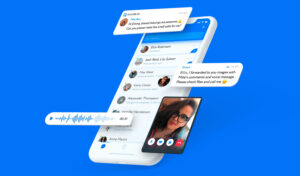
Newsletter businesses are hot, and justifiably so.
Any many people on X have been questioning whether we are in a newsletter bubble:
I think it’s about to go 10x due to AI.
In this story, I explain how to leverage AI tools to make operating newsletters far easier, and why this trend will displace agencies.
But first, let me explain why I think newsletters will become the gateway online business model drug, taking over from the SEO blogs and content sites we currently see on all the big marketplaces such as Flippa and Empire Flippers.
The Rise of Newsletter Businesses
The cost of starting a newsletter is $0, with platforms like beehiiv that make it simple to launch, monetize and scale.
And by building and nurturing a newsletter audience that engages with your content, and trusts your picks and expertise, you’re able to unlock sponsorship revenue at far higher CPMs (cost per 1000 opens to advertisers) than you can make with websites.
Website advertising platforms such as Ezoic can generate a strong $10-$20 earnings per thousand views, but newsletters typically command a $50 CPM in the business niche, with investing being higher, and AI a bit lower.
The 35 Best AI Newsletters on Beehiiv | HackerNoon
Generative artificial intelligence (AI) is moving at warp speed. Keep up with the latest trends and developments by subscribing to several AI newsletters!
So with a 50K email list, and a 50% open rate, an email send with just one ad unit (you should have multiple) will earn you $2,500.
And you can also monetize in so many other ways:
- Subscription fees
- Paid recommendations
- Sponsored editions
- Own products
- Community access
- Lead generation
- Affiliate marketing
As you own your list, the newsletter business model is much more defensible than building niche sites that are dependent on SEO traffic, something I used to do and wrote about back in 2018 (when Hackernoon was on Medium) with Want To Hack Wealth? Flip Websites Not Cryptos.
And you can sell these media assets for currently $2-5 per subscriber plus a multiple of revenue on the newsletter marketplace Duuce.
I Built and Sold a Newsletter for 5 Figures – Here’s How! | HackerNoon
My Journey Growing a Business in the Midst of A Pandemic
The key part missing right now, which takes up the majority of the time operating newsletter businesses, is the sourcing and writing of news stories.
Fortunately there are now AI solutions to help with this burden, and we’ll start with the usual suspects, before moving to new dedicated newsletter software.
AI Optimization
Just like AI has been revolutionizing content sites, it’s now hitting newsletter businesses.
And I’ve been using it to help with my own newsletters such as Digital Asset Investor, and within my newsletter agency Letter Operators. We’ve sifted through 100s of applications for writers, given test stories to the best ones, and quickly realized that AI summarizes and generates output better than 90% of them. And obviously with no grammatical errors.
We now take the AI output and give it to human editors who add a layer of opinion that all newsletters need to compete in an increasingly AI dominated world. Although I’m sure a forthcoming ChatGPT 5 would be able to give such thoughts!
This AI content + human editing model was first created by Content at Scale, the AI platform that enables website owners to output SEO-optimized content, who coined the term Artificial Intelligence Optimization (AIO).
They even teach people how to make money in this new role as an AIO editor, or AIO agency owner where you can boost your agency profit margins from a decent 40% to over 70%.
The AIO Process for Newsletters
So what does this AI optimization look like and how can you implement within your own newsletter business?
We’ll start with the usual chat suspects, and then move to a new dedicated newsletter tool.
First up, you need your sources, where you will find stories from in your niche. Sure you can create a spreadsheet listing all the top blogs and news sites in your niche, but it’s far easier to pull the RSS into a tool that aggregates them and makes it easier to check.
Or you can simply ask the AI chat bots, although as Chat GPT can’t search the web out of the box (you need access to the browsing plugin), you’ll need to use Bing Chat and Google’s Bard for this.
With Bing Chat, you simply ask what the top stories have been over the last week and it gives you the results plus web links:
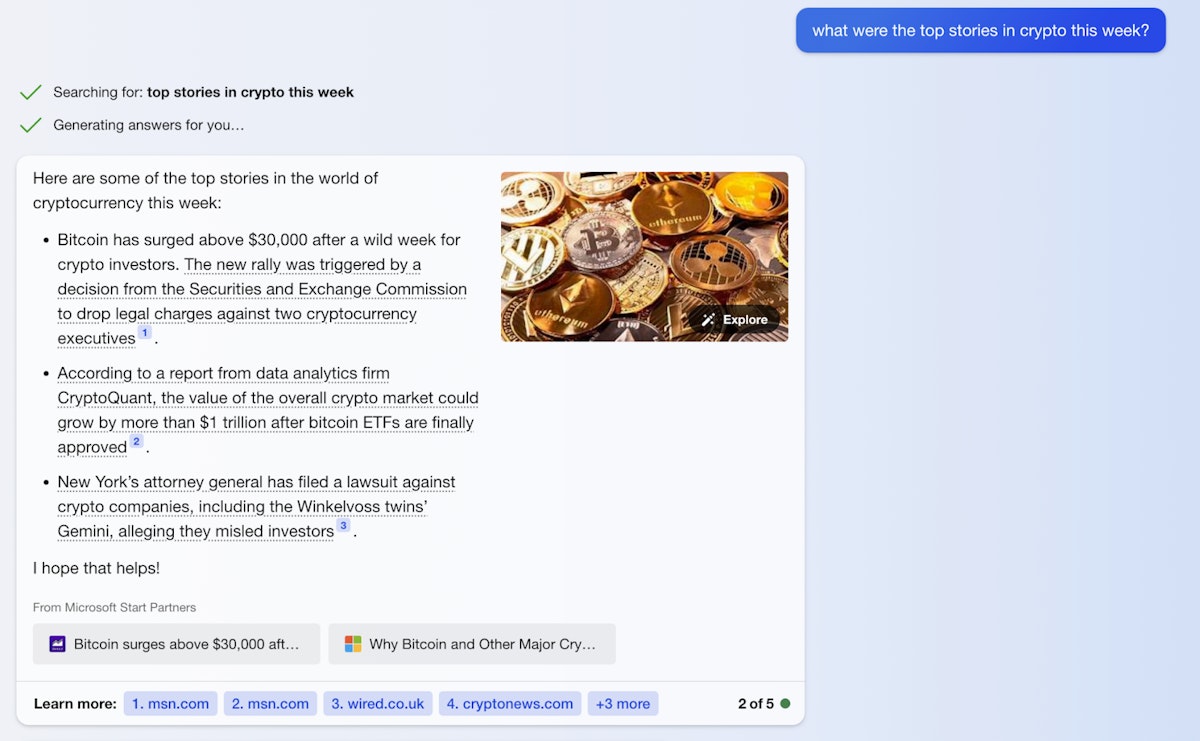
Bing output
Bard isn’t as good or simple as you need to click on ‘Double-check response’ to get the sources and then hover over the coloured parts:

Bard output
The output is better formatted for a newsletter, however, with short summaries. Even though shorter stories will result in higher click through rates which helps email deliverability and also enables your sponsorships to get more clicks, most operators will likely want longer-form stories, 150+ words.
As such, select a particular source and ask the AI for the wordcount you want. I picked a recent top story on Hackernoon then asked each chat tool to summarise the URL.
ChatGPT can’t do this out of the box, even with paying for GPT-4 so that’s a instant fail:
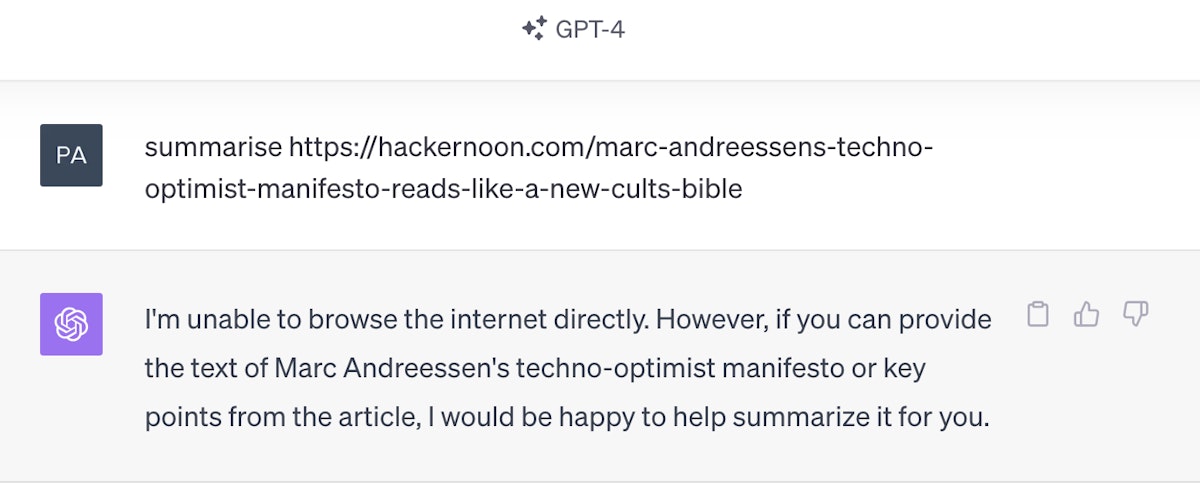
Chatgpt Output
You have to copy and paste the content in, and no-one has time or the desire for that.
Fortunately Bard can summarize URLs, and outputted in 130 words to my 150 word request:
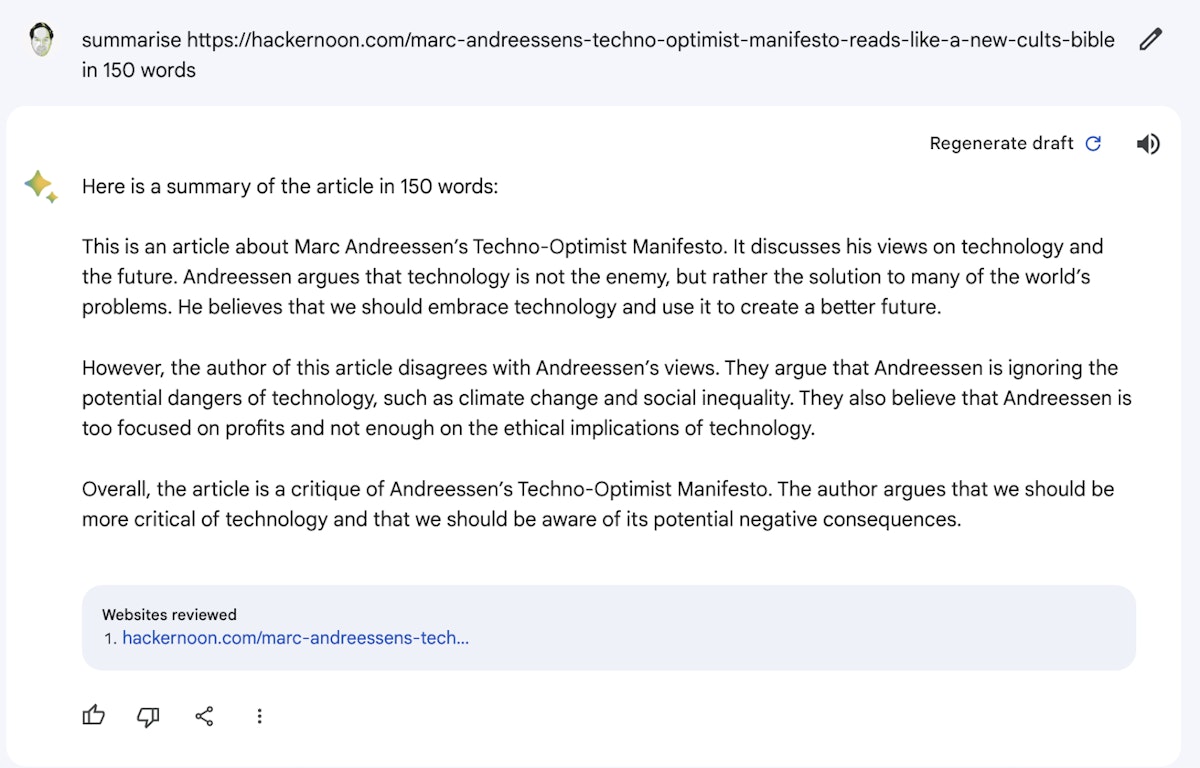
Bard Summary
You can also use a ‘TLDR’ prompt, this is the output from Bing which generated a 107 word summary:

Bing output
AI Newsletter Software
If you want a tool that will automate the above sourcing and summarizing for you you need to check out Neural News.
First up, its content discovery engine creates a newsfeed for you based on your niche or keyword, here is one about startups:
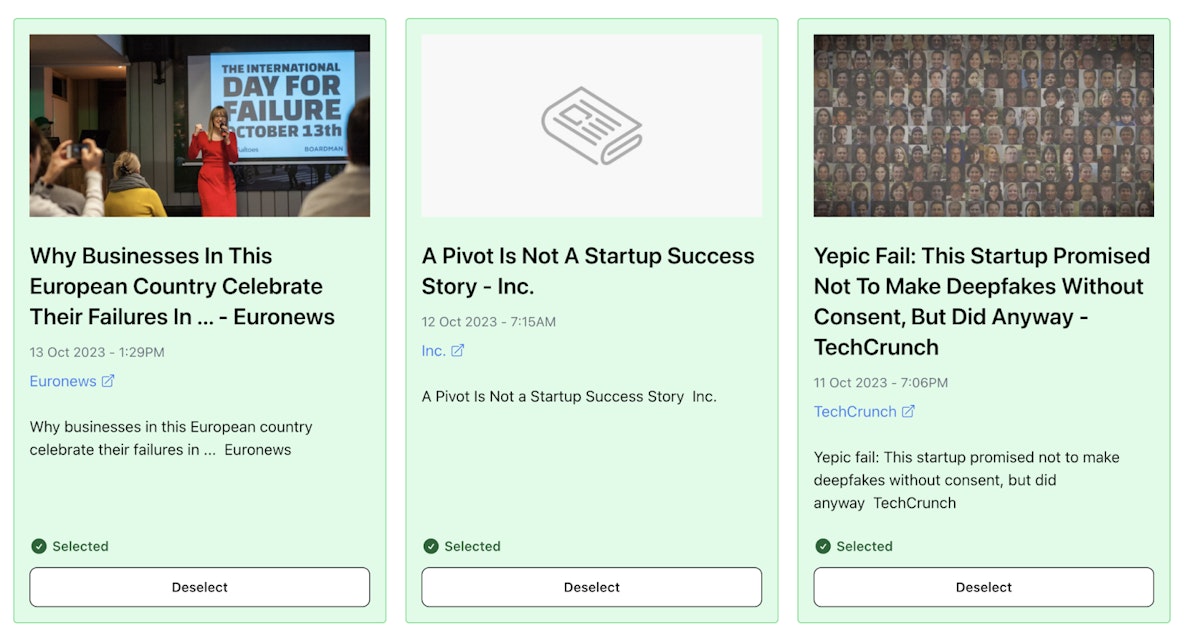
AI Newsletter Software
You then simply select which are the most relevant stories for the AI to summarize, and on the next screen select a tone (I went for ‘engaging’) and desired word count:
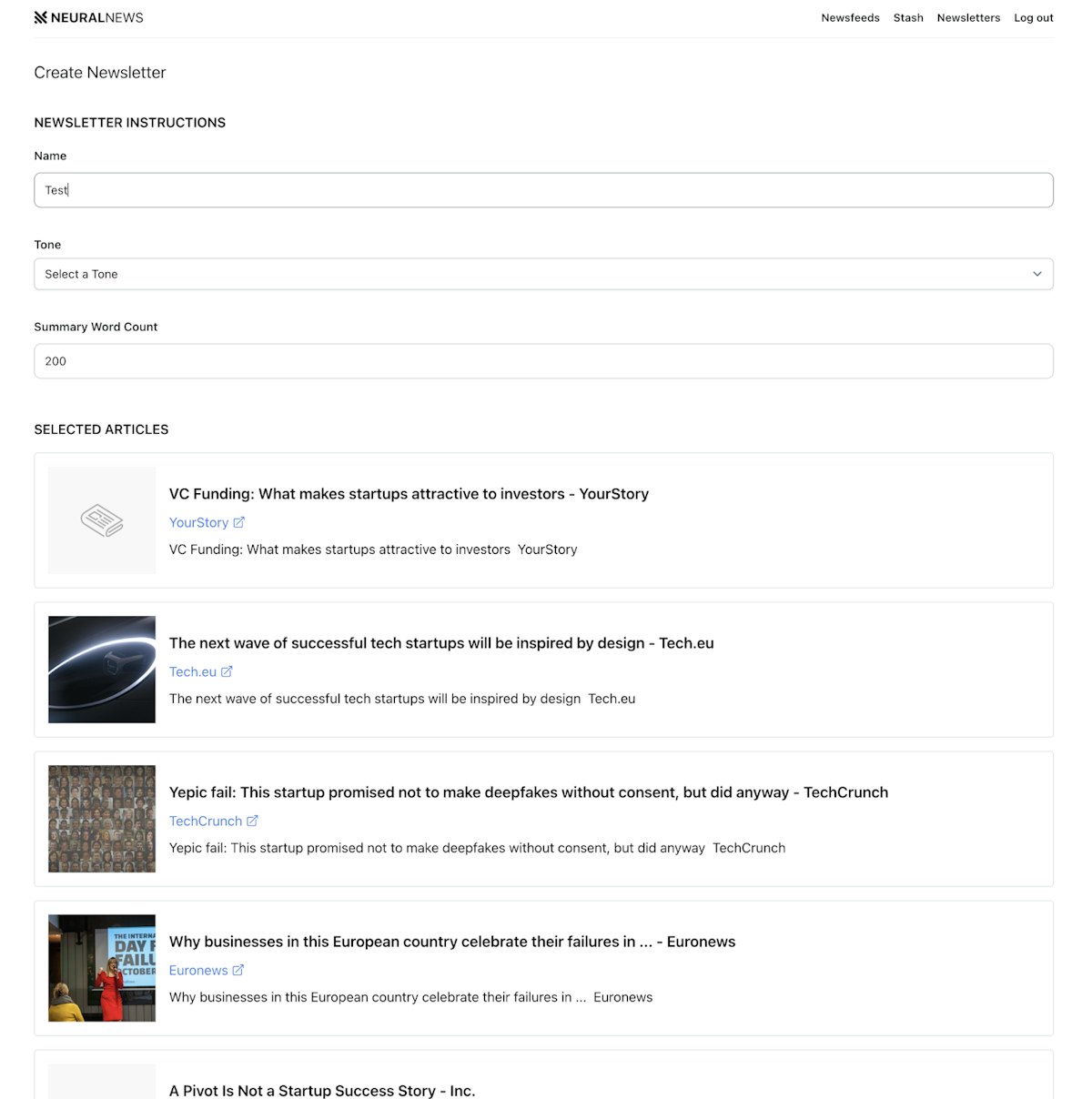
Creating a Newsletter
It then generates a newsletter with stories that have a title, email and view source link, and you copy as rich text directly into your newsletter platform, such as beehiiv in my case.
When it’s in your beehiiv account you can use their artificial intelligence built for newsletter operators where the smart editor will simplify, shorten or extend the output, or change the tone.
There’s also a bunch of other features, such as AI image tools where you can generate images such as the featured image for the web post, from directly inside the editor (just like you can here at Hackernoon):
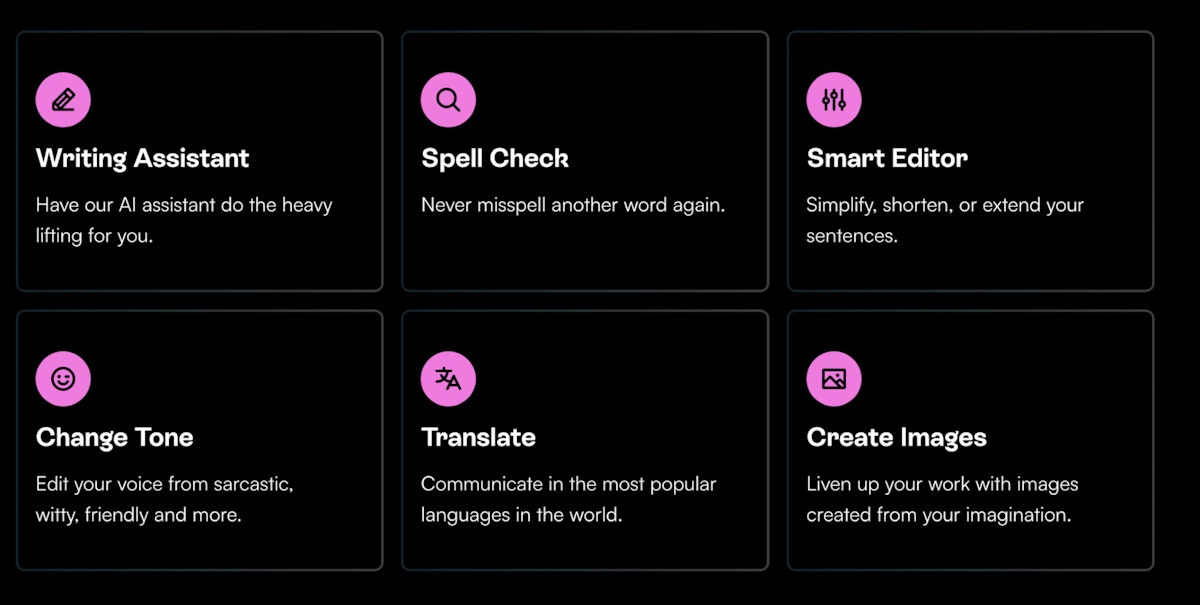
Features
The Death of Agencies
Whatever you feel about this AI powered newsletter reality, there is no stopping it, the only thing to do is embrace it.
It’s going to kill most $5K/m newsletter agencies, like the package I used to sell so I thought I’d be the one to disrupt myself.
I now use the above tools (and others) to offer a produtized service at Letter Operatorsto deliver 6 stories a week uploaded into newsletter operators’ beehiiv account, ready for them to put their own spin on it.
These stories are AI + human sourced and then AI summarized + human edited.
I’d much rather own a business with 500 customers paying $500/m than 50 clients paying $5K/m, especially one that involves complexity due to human labor.

Stripe screenshot
This anti-agency is anti-fragile in comparison, and is an asset that’s much easier to sell and will achieve a higher multiple.
In the niche website space, we’ve already seen the fall of a large content writing agency with 100+ writers due to the disruption of AI:
One of the owners stated that:
The steep rise in AI content resulted in an incredibly quick decline in revenue. Being such a large business with lots of staff and high overheads, we were unable to cut costs quickly enough.
I don’t want to be this guy.
Conclusion
Platforms like beehiiv or Shopify, make launching and running online businesses simple and profitable.
And newsletter businesses are the simplest model I know, yet can be monetized in every way possible.
The AI tools above (and future ones being created) will enable so many more people to launch, operate and make money from newsletters, without the weekly grind of having to find and summarize news stories. Instead, creators will be freed up to focus on crafting opinion pieces and their own products.
Ultimately, this will indeed cause peak newsletter, where there will be so many more publishers competing for sponsorship dollars.
The bubble or top will certainly be in then.
However, I’m bullish that media buyers will start directing a much greater percentage of their budgets into newsletters with engaged subscribers, vs just giving it to the big platforms targeting cold traffic.
And finally, to not be displaced by AI, you need to incorporate it into your business, whether you’re the end-user, or an agency provider.
This article was originally published by Richard Patey on Hackernoon.



